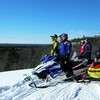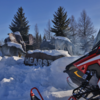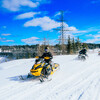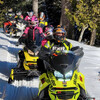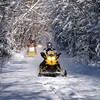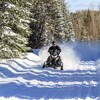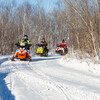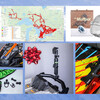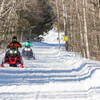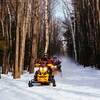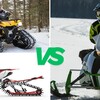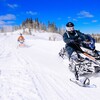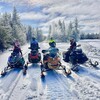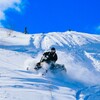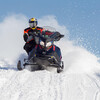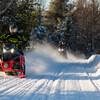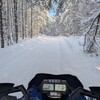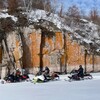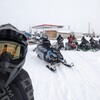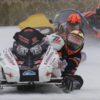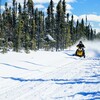
The Unsung Heroes of Ontario Snowmobiling
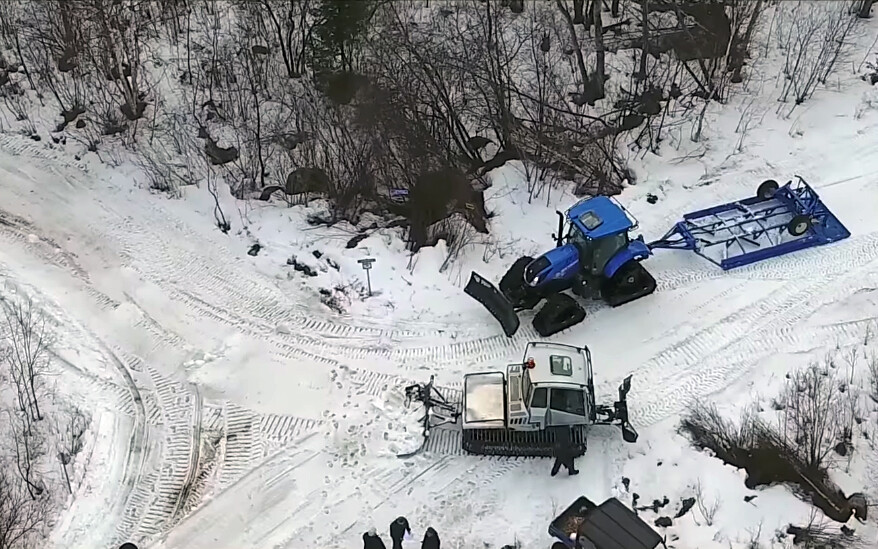
A Long Overdue Meeting of the Minds
This past winter, as governor for OFSC District 13, we had the idea to create a formal training session for our district groomer operators. This would include classroom time and hands-on training. We invited all of the operators from our 12 member clubs to convene in Algoma Country's Dubreuilville, Ontario to train, refresh, and create a sense of purpose among district groomer operators.
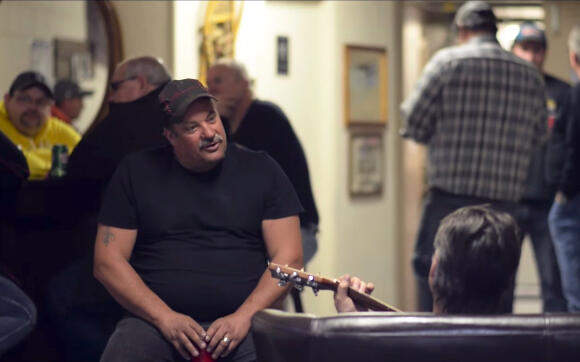
The response to the invitation was outstanding! These unsung heroes, magicians of the perfect snowmobile trail, showed up for the social at the Magpie Relay Motel & Resort “man cave” where they fraternized with fellow operators of adjoining clubs. Many had never met each other, even if they passed the grooming relay baton a couple of times per week. Most never physically see each other, as they only know each other has been there because the joining trail is flat. They don’t even get to talk to each other during the winter months. Friendships were solidified by the common work and shared passion. This initial gathering laid the groundwork for the next few days of learning and sharing.
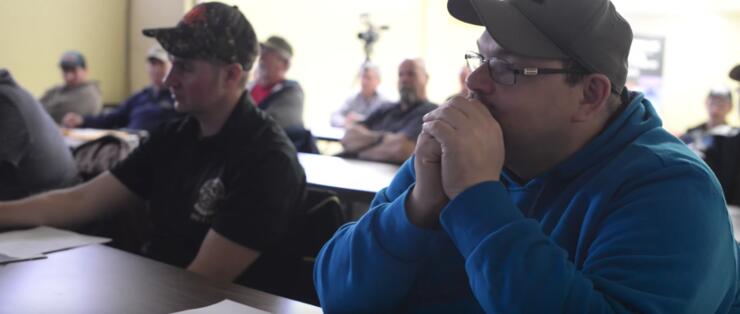
The Art of the Trail
In the classroom, they learned about the “art of the trail,” a session by Ian Auger from New Liskeard, Ontario’s Ebert Welding shop. Ebert Welding is the inventor of the Sur-Track grooming system, where a farm tractor is converted into groomer with caterpillar-type tracks. It pulls a drag which grooms the trail and controls the steering, also known as a ram-steer. The operator turns his steering wheel inside the cab in the direction he wants to go and the cylinders mounted on the rear drag apply pressure to the tractor. Since the drag is firmly anchored in the trail, the hydraulic force exerted by the cylinders swings the tractor in the desired direction of travel while maintaining full pulling power to both tractor tracks. The drag creates resistance between the tractor and the edges of the snow, forcing the tractor in the opposite direction. This hydraulic synergy can be channeled to produce the most beautiful flat snowmobile trails when in the hands of a talented groomer operator. As it goes, the holy grail of all snowmobilers is to be the first snowmobile on the trail come the morning after an overnight grooming session.
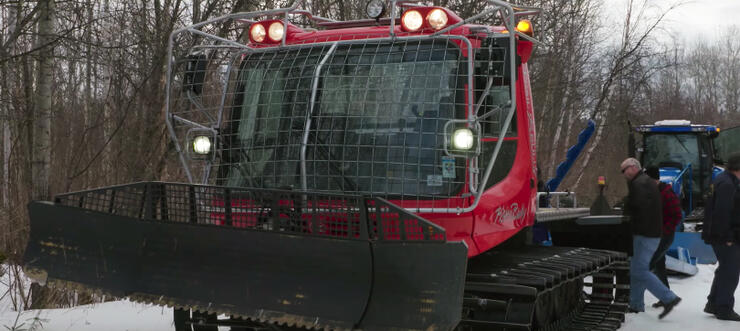
During the classroom session, operators learned about snowmobile trail memory and how to make sure the mother of all moguls is obliterated by the proper groomer and “drag-passover.” An inappropriate use of the drag knives, the front blade, or the rear pan can wreak havoc on the surface of a trail. Many people think that if they look back and see a nice even white surface that comes away from the drag that they have achieved trail-Zen. This is not the case. Should an operator fail to cut the moguls back to their initial zero degrees plane they will precipitate mogul memory.
In simpler terms: when you have several bumps in a row, you will get a high and rut. The high bump gets cut by half, which fills in the low rut with snow that has been churned by the drag. The churning action breaks up the snow into smaller particles. The underlying issue rests with the cutting of the original high, which was cut in half. This high bump is made up of denser or harder snow, whereas the low rut has been filled with softer, aerated snow.
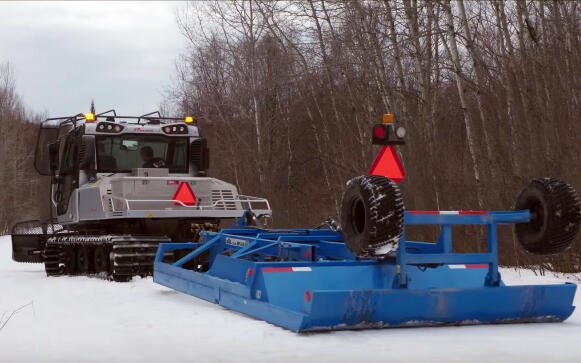
The travelling snowmobile suspension exerts downward pressure against the trail and will compact the soft snow in the rut, leaving a depression and pushing some of the snow on top of the previous high mogul, creating the same sequence of bumps and crevasses that existed prior to the grooming pass. Because of this, every operator needs to make sure they remove the mogul memory when grooming trails—if they don’t, the trail will always have the same bumps and ruts in the exact same places. Learn something new every day, huh? There’s so much that goes into maintaining the trails that those who use them rarely have the opportunity to really get to know.
the Night time is the Right Time
There’s a reason why these unsung heroes work at night. Night grooming has several advantages and really should be adhered by all districts. First of all, night grooming provides greater visibility for riders. On the side of the groomer operator, there are very few people who ride at night in Ontario, which should be encouraged.
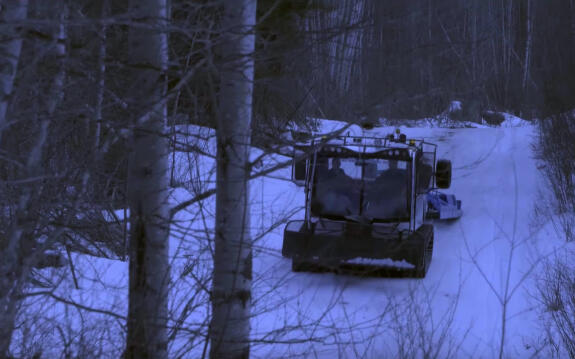
The key reason why groomers should be sent out at night is that nights are usually when the temperature is coldest, which enables the trail to set and helps build new trail memory. Trails need their rest, just like snowmobilers do! If the trail is groomed at 1 am, by 8 am it will have had the chance to let the cold night air penetrate the freshly groomed trail and the hardness of the ruts and highcuts will be evened out in a manner that will create a new longer memory planned trail.
This is why trails in Northern Ontario typically last longer and can sustain large amounts of traffic—because their bases are hard to the core due to cold nights and lower traffic during the setting time. If the warm weather penetrates and melts the bonds that exist in your trail base, it will deteriorate at a quicker rate and be more difficult to repair over time, especially if you no longer have cold nights to turn to.
Groomer Porn
Some of the groomer operators who attended the training session had up to 20 years of groomer operating experience. And still, some said they had “light bulb” moments during the session. Auger provided other interesting lessons and information and none went unappreciated. I highly recommend fellow governors contact him to set up this highly informative training session. District 13 has decided to make this an annual event: the 2017-2018 session will be held in Elliot Lake. The plan is to hold it prior to the start of the season, rather than at its end this time.
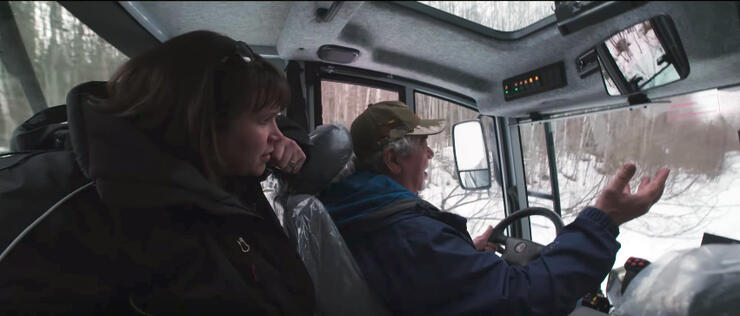
After the training session, we were able to have every operator operate a different OEM groomer and tractor, thanks to The Shop Industrial, Mike Heino, and Adrienne Gamble Racette of Sudbury who hauled and floated a Prinoth Husky with a drag and a Prinoth Trooper with a packing bar to our training session. They were on-hand for classroom teachings and hands-on operation of their equipment.
In addition to these two fabulously mint groomers, we had a New Holland Tractor fitted with Soucy tracks, compliments of Ebert Welding. We also floated our own Pisten Bully unit, which is operated by our Marathon Sno-Kickers snowmobile club. On top of this, we threw in an additional two Sur-Trac tractors, the Magpie Relay Motel & Resort TS115A rental tractor, and the Dubreuilville Alouettes’ TM130 for a total of six groomers for our operators to try, test, and compare. The session had these guys smiling from ear to ear, as this was basically what the Groomer Guy referred to as “groomer porn” for most of them, LOL! You can see for yourselves in the video that even when the conditions were not ideal, nobody’s spirit was deterred and everyone benefited from the session.

In retrospect, I hope that this idea creates a wave across the province and that others will imitate, improve, and implement the same or similar initiatives. I think this is what the TED Talks call “an idea worth spreading.” And when it comes down to the riders, know that you play an important role in all of this, so please let the trails rest so that they can build their memory plane during the night. Enjoy our OFSC trails—and remember our unsung groomer operator heroes when you ride!
Recommended Articles

The Complete List of Snowmobile Events in Ontario 2025-2026
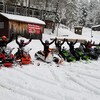
The Best Snowmobile-Friendly Lodges
Snowmobiling Winter Weather Forecast 2025-2026
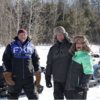
I Rode the Explorers Snow Tour in Ontario and Here’s What It Was Like

Why Ontario is One of the Best Snowmobile Destinations in the World
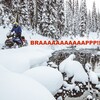
11 TikToks That Prove Ontario is the Best Place To Go Snowmobiling

5 Weekend Snowmobile Getaways Near the GTA
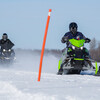
31 Ways To Get In The Know About Snowmobile Trail Riding in Ontario
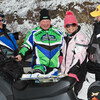
A Beginner's Guide to Snowmobile Lingo


